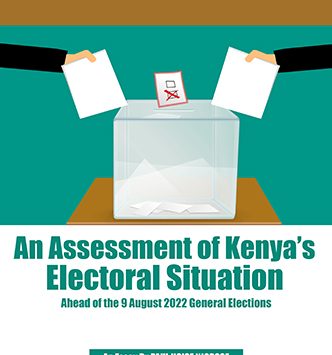
With Roe v. Wade overturned, pro-lifers have an exciting opportunity to increase protections for the preborn in their state. Now more than ever it is important to know which laws work, and which don’t.
So, what do common pro-life and pro-choice policies truly do, and what policies can you fight for to make your state safer for preborn children?
Often, rather than defending abortion, abortion advocates make pro-life laws sound extreme and their own position moderate. They paint an apocalyptic picture of what the world would be like should abortion be restricted. They promise that if we truly wish to prevent abortions, their methods are more effective.
Despite all this, actual facts on the effects of various policies often fall by the wayside. Claims of illegal abortions and maternal deaths are made without evidence. When such theories are challenged, discussions often revert to matters of principle instead of practice without a moment’s reflection.
Because of this, it is vital to keep in mind what the effects of abortion laws really are. If we don’t, our beliefs may be colored by incorrect assumptions that we never even allow to be challenged.
Do Pro-Abortion Policies Prevent Abortions?
Pro-choice advocates often state that if pro-life people really wanted to prevent abortion, we would focus less on banning it. Instead, they say we should focus more on promoting things like birth control and sexual education. But the fact is that these approaches are not effective ways to reduce abortion.
Myth: Contraception Programs Reduce Abortions
People often take for granted the idea that contraceptives reduce abortion. This is understandable. After all, birth control is designed to prevent pregnancy. However, the data shows that contraceptives don’t really prevent abortions. They may not even lower pregnancy rates.
https://www.youtube-nocookie.com/embed/wVDz8GLnXjA?controls=0
For example, one study on Family Planning in the UK found that contraceptive access for those under 16 had little to no impact on abortion rates. Another study in Scotland provided emergency contraception for women with similar results. Despite distribution to tens of thousands of women and countless courses, researchers found no effect on abortion rates.
This conclusion is repeated across almost all research. In one review of twenty-three different studies looking at increased access to contraceptives, none of them found that this access reduced pregnancy or abortion rates.

Some research even shows contraceptive access increasing abortion rates. In Spain, contraceptive use nearly doubled between 1997 and 2007. Over this same time period, abortion rates doubled as well. Other studies have shown that while increased access to contraceptives may decrease teen pregnancies in the short run, it leads to large increases later on.Studies show that while increased access to contraceptives may decrease teen pregnancies in the short run, it leads to large increases later on.CLICK TO TWEET
There are many reasons why contraceptives might not help reduce abortions. One simple explanation is that the level of acceptable risk is constant. So, when pregnancy is less likely, sexual activity increases, with little net effect. Another explanation is that once a person is already sexually active, that behavior rarely changes, leading to larger long-term chances of pregnancy.
Related: Does Contraception Lead to Abortion?
Myth: Sex Education Programs Reduce Abortions
Many people assume that better sexual education will reduce abortion rates. After all, those who are better informed should be better able to avoid unwanted pregnancies. In practice, however, this isn’t really the case.
It sometimes does appear that sex-ed within schools is linked with lower birth rates. However, sex-ed does not reduce abortion rates.
Many studies have been done on the impacts of various sex-ed programs. Time and again, it has been found that more education doesn’t prevent sex, pregnancies, or abortions. Sometimes sex-ed even appears to have the opposite effect. Indeed, some research has found that cutting spending on sex-ed and contraceptive programs reliably decreases pregnancies. Across the world, sex-ed leads to increased teen pregnancies instead of decreasing them.
At best, sex-ed programs tend to be ineffective at reducing teen pregnancies. At worst, they might make things slightly worse. Regardless of one’s opinions about sexual education, sex-ed is no solution to abortion or teen pregnancies.
Do Pro-Life Policies Really Work?
Political pundits like to give pro-life policies a bad name. They tell horror stories about illegal abortions and claim that these horrors are everyday occurrences when abortion is restricted. This emotional appealcan make even the strongest pro-life advocates lose confidence in pro-life bills.
In reality, however, most pro-life policies are extremely effective at reducing abortions. Even modest restrictions drive large decreases, and the strictest bans do not produce the negative outcomes that pro-choice advocates often claim they will.
Today, we have more opportunities now than ever to help reduce abortion. The Supreme Court in the United States has overturned Roe v. Wade, allowing for abortion restrictions to be tightened across the US. We have the knowledge to know what laws work well, and which ones do not work at all. So here’s what you can do to help reduce abortion, and how well different policies might work.
Fact: Cutting Public Funding for Abortion Reduces Abortions and Unintended Pregnancies, and Improves Maternal Health
Many people believe that tax money is not used to fund abortion. Or, they believe those abortions would happen anyway even if their tax dollars didn’t pay for it. Pro-choice and even pro-life advocates at times repeat this claim over and over to dispel their own concerns and the concerns of others over where their money goes.
In truth, around a quarter of abortions are funded by taxpayers through Medicaid, or about 150,000 abortions annually. Many more abortions are also funded through various other direct and indirect ways. Because of this, taxpayer funding for abortion is often a focus of pro-life laws.
The effects of funding restrictions are pretty clear. Time and again, studies have shown that state-funded abortions are reduced by about one-third when that funding is cut.
Not only do funding cuts reduce abortions, but they also reduce unintended pregnancy rates. Despite drops in abortion rates, the number of births either remains static or decrease. When abortions have to be paid for out of pocket, people exercise greater care in avoiding pregnancy.
Some people fear that without public funding for abortions, women will seek out cheaper options and get illegal abortions from untrained providers. Many argue that this will increase maternal deaths and injuries. This claim, however, is not backed by any research. Instead, the opposite is true.
Rather than harming women, funding restrictions decrease the number and proportion of hospitalizations from abortions, as research has shown. This effect is likely a result of a decreased number of abortions, which carry great risks of complications.
Funding restrictions should be a policy that everyone can support. These restrictions prevent abortions, they don’t increase pregnancy rates or birth rates, and they result in better maternal health.
Fact: Mandatory Waiting Periods Reduce Abortions
Mandatory waiting periods are a rather moderate policy championed in states without a strong pro-life presence. They don’t directly prohibit abortions, and as they aim to help women reconsider their choice, they are more widely accepted. Like many more moderate policies, however, many people do not believe that they are very effective.
While evidence tends to show that waiting periods reduce the abortion rate, the data isn’t always clear-cut. Moreover, research is sparse, and Mississippi is one of the only states where real conclusions can be made. There, waiting period laws caused around an 11% decline in abortions, after accounting for other factors.
When waiting period laws are passed, we often see traveling out-of-state for abortions and increases in later abortions. In most cases, these increases appear to be minor, but this is not always true. In Tennessee, the number of second-term abortions increased by as much as 50% alongside declines in the total number of abortions performed. As of yet, no studies have been done on the physical health effects of this delay. As later abortions tend to be more dangerous, however, there may be adverse effects on women’s health.
Many studies have been done on the effects of waiting periods on women’s mental health. While the research is not always conclusive, most studies tend to indicate a positive result. Consistently, states that adopt waiting periods see a large drop in suicide rates. Given the severe negative impact that abortion can have on women’s mental health, this finding makes a lot of sense.
Fact: Mandatory Counseling and Informed Consent Laws Reduce Abortions
Like mandatory waiting periods, informed consent laws are often seen as rather unimportant. They are not given much attention by research, but what research there is tends to support them.
Informed consent laws often get lumped into studies of abortion policies generally, but some evidence does show that they work. Research indicates that informed consent and counseling laws cause “declines in both the abortion rate and the abortion ratio.”
The most significant result of these policies has been observed in Singapore. There, mandatory counseling was linked to nearly a 30% decrease in the abortion rate. Confounding factors make it difficult to tell if all of the 30% decrease was due to mandatory counseling laws, but at least some of this decline can be credited to them.
Fact: Parental Consent Laws Reduce Abortions and Unintended Pregnancies
Parental notification laws are another moderate pro-life policy that many champion as a middle-ground way to prevent abortions and also reduce abuse and help women.
As with many pro-life laws, research has shown that parental notification laws both reduce abortions and pregnancies. When such laws are passed, birth rates among minors tend to decline, despite a decrease in abortion rates.
This fact is demonstrated by a multitude of studies. Parental consent laws reliably decrease minors’ demand for abortion by around a quarter, though some minors do appear to go out of state to obtain abortions.
Fact: Supply-Side Restrictions Cut Abortions and Unintended Pregnancies
Abortionists often argue that women seeking abortions will go to almost any lengths to obtain one. This, however, just isn’t the case. As evidenced above, even small things like waiting periods or abortion not being free prevent huge numbers of them. So, what happens when abortions are just less available?

In the US, abortion providers aren’t closed directly. Most often, they simply shut down when states impose new safety laws, such requiring clinics to be licensed as surgical centers to performing surgical abortions or mandating that they be located near a hospital.
It’s easy to see how clinic closures affects abortion rates. In Texas, for example, new safety laws resulted in the closure of nearly half the state’s abortion clinics. There, it was found that each 100-mile increase to the nearest abortion clinic resulted in a decrease of between 10% and 25% of abortions. Research also found that this decline of abortions did not result in more unhealthy pregnancies.
This conclusion is repeated in other research as well. Whether due to a lack of providers, long distances, or clinic congestion, reduced supply has drastic effects on abortion rates. Most studies find that a 100-mile increase in distance to the nearest clinic decreases abortion by around 10%. Other studies have reported even larger effects, however. In one study, a mere 25-mile increase in distance resulted in a 10% drop in abortions.
Supply-side laws have had some of the largest impacts of any laws on abortion in the US. According to the Guttmacher Institute, decreased access to clinics alone resulted in around a quarter of the observed decline in abortion rates between 1988 and 1992. As with many other pro-life laws, those that reduce access to abortion providers tend to significantly decrease unintended pregnancies.
Fact: Abortion Bans Reduce Abortion Rates and Maternal Deaths
It is difficult to evaluate complete bans on abortion because solid data on the subject is sparse and hard to break down. In the US, abortion hasn’t been totally banned in any state in almost 50 years, and even before that, it was legal in many places.
If Roe is overturned and power to decide the legal status of abortion returns to the states, it is important to know exactly what total bans on abortion might do. Though we have no good data from the US, there are many other countries we can use to examine the effects of complete abortion bans. One of the best examples of this is Chile.
Chile
Until 2017, abortion was totally banned in Chile, and has only recently been legalized in rare cases. The country was known for having one of the strictest abortion laws in the world, and for good reason. Abortion for any reason was illegal, and that included cases of supposed threat to the mother’s life. Because we have data from before, during, and after bans, Chile is ideal for evaluating the effects of abortion bans.
Since abortion was banned in 1989, Chile has witnessed astounding declines in maternal mortality. Between 1989 and 2009, the maternal mortality ratio decreased by over 58%, falling from 40.8 to 16.9 per 100,000 live births. It is difficult to estimate how many illegal abortions take place, but if abortion-related mortality is any evidence, not many occur. After the ban, abortion-related mortality declined by over 96%, indicating that either few illegal abortions occurred, or that they were much safer than legal abortions.When abortion was banned in Chile, the maternal mortality ratio decreased 58%CLICK TO TWEET
The drops in maternal mortality in Chile have been so large that Chile has had one of the lowest maternal mortality ratios of any country on the American continent. It has surpassed even the United States and has continued to improve maternal outcomes in recent years.
Mexico
As in the US, the legal status of abortion varies across Mexico. Different states have distinctly different laws and very different health outcomes.
Consistently, states that restrict abortion have lower maternal mortality rates. When abortion has been limited, maternal deaths have decreased. Where it has been legalized, greater maternal deaths have followed.
When one digs deeper, however, it is evident that there is more going on than just pro-life laws saving lives. Much like in Chile, other factors have had a large impact on maternal health. Clean water, sanitation, and female literacy have been the driving force behind declines, though abortion restrictions coincided with that.
It is easy to mistakenly credit changes in abortion laws for subsequent changes in maternal deaths. This is true of both legalizing abortion and banning abortion. If one is not careful, this can lead to flawed conclusions. We must bear this in mind because while legal abortion is often credited with improved health, there are always other factors involved.
Ethiopia
Of all the examples of legal abortion’s effects on maternal health, Ethiopia’s story is perhaps the most damning.
Until 2005, abortion was banned in Ethiopia except in cases of the mother’s life or health. Maternal mortality rates had been decreasing for many years. Both abortions and abortion-related deaths were becoming less and less frequent.
As researchers note, this is in line with the experience of most countries. Generally, abortion-related deaths tend to fall to low levels simply due to better healthcare. Later, when abortion is legalized, it tends to be given credit for solving problems that were already being solved.
In Ethiopia, however, abortion proponents never got this chance. After abortion was legalized, reductions in maternal deaths slowed or even stopped. The rate and severity of abortion complications, and deaths, increased after the law was changed.
Abortion-related septic shock and organ failure more than doubled after abortion was made legal in 2005. Things didn’t get better with time, either; instead, they continued to get worse. Between 2008 and 2014, peritonitis and organ failure further quadrupled, and shock nearly doubled.
To quote the authors of the most recent study on Ethiopia:
Rather than being a silver bullet to reduce deaths from abortion, abortion legalization has resulted in a vast increase in the number of abortions, without any appreciable decrease in abortion mortality or maternal mortality. There is some evidence mortality, and certainly morbidity, have even increased since legalisation.
Ultimately, research shows that when abortion laws are loosened, maternal mortality tends to increase, and when the laws are restricted, maternal mortality decreases. It can be difficult to say how much of the change in maternal mortality rates is the result of abortion legislation, however. Many other factors can influence maternal mortality, but the trend is fairly consistent.
Regardless, the good outcomes of abortion bans do imply that legal abortion is not needed to promote maternal health.Legal abortion is not needed to promote maternal health.CLICK TO TWEET
What We Are Doing Makes A Difference
As pro-life advocates, it’s easy at times to get discouraged. It can feel like so much effort to progress just a small amount. It can feel like our votes don’t count, our actions don’t matter, and we are fighting a fight we can’t win. But we are already making a difference.
After Roe, the abortion rate in the United States skyrocketed, but it stopped going up in 1990. Over the past several decades, we have unleashed an onslaught of laws designed to restrict abortions, and we haven’t just been holding the line. We’ve been winning.
In 1992, only 20 states enforced parental involvement statutes. In 2000, 32 states enforced such laws. In 2000, only 31% of women lived in one of the 13 states that pro-choice groups classified as “hostile to abortion rights.” By 2010, that number had surged to 22 states, with five of them considered “extremely hostile.”
Between 2010 and 2014 alone, states enacted 231 restrictions on abortion. Among these were gestational limits, parental consent laws, waiting periods, counseling laws, and more. In contrast, only 4 measures designed to expand access to abortion were signed into law. Those mainly just established “buffer” zones around abortion providers.
Thanks in large part to these and other pro-life laws, abortions have decreased so much that there are now fewer abortions being performed in the US than at any time since Roe v. Wade. We have won this victory through a thousand cuts, and as Roe is overturned, we can keep moving forward using tried and true pro-life policies.
As pro-life advocates, it can feel like our actions are too small to matter. But they do. We can bring about a lasting end to abortion, and it’s the actions of every pro-life advocate that will make that happen.
https://www.youtube-nocookie.com/embed/ZO-cTlCRmew?controls=0
This article was updated on June 24, 2022.
Subscribe now for updates from Msingi Afrika Magazine!
Receive notifications about new issues, products and offers.





















